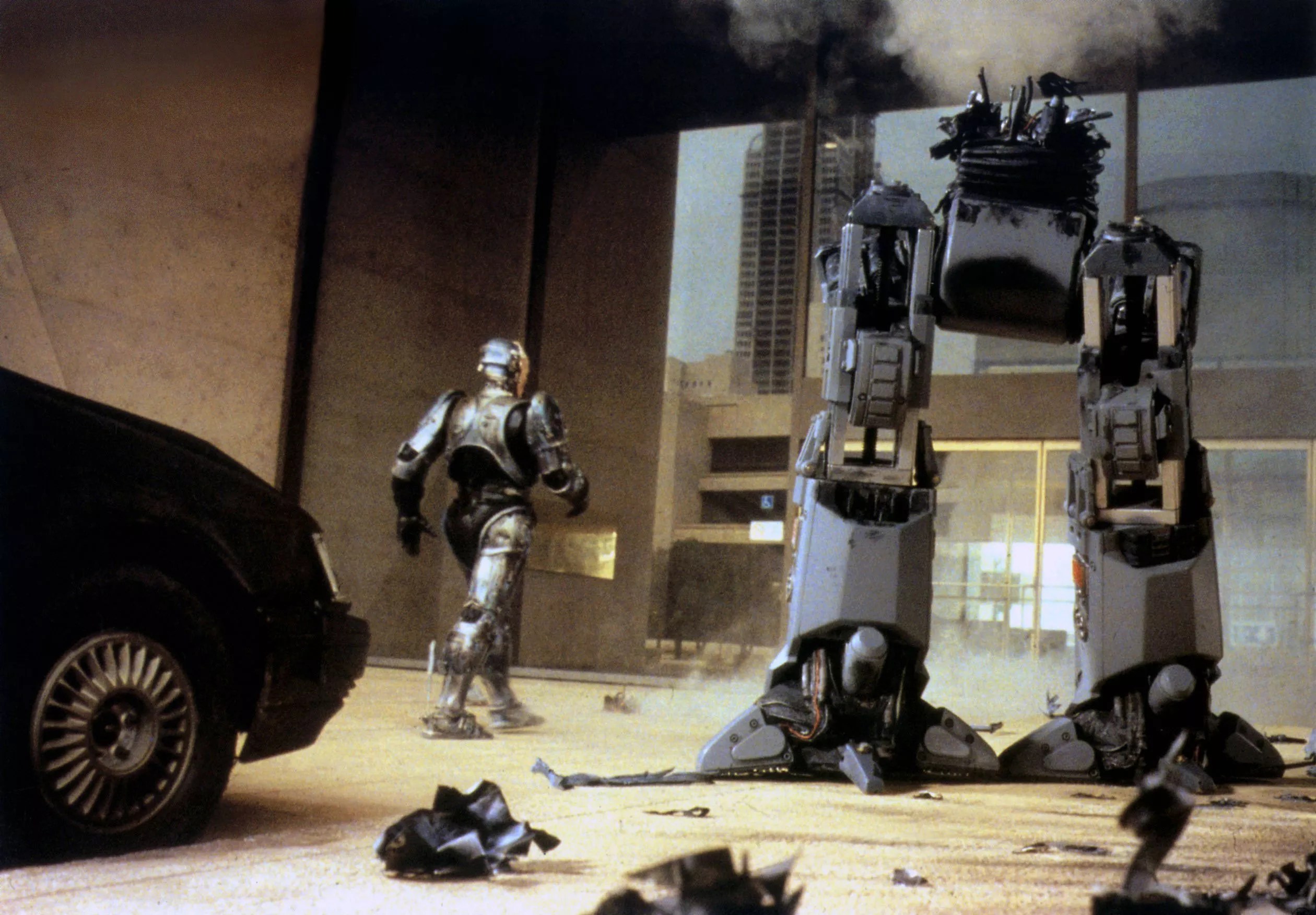
AF archive / Alamy Stock Photo

Audio By Carbonatix
For many, Dallas City Hall is an architectural marvel, a civic landmark, or simply the place you go to get a permit. But for film fans, it’s something more: OCP Headquarters, the ominous corporate citadel from the 1987 sci-fi classic RoboCop. And for the man inside the RoboCop suit, Peter Weller, the building is not just a backdrop but a cornerstone of modernism that must be saved.
The building is at the center of a heated debate, as the Dallas City Council remains divided on whether to invest in costly repairs or sell the structure altogether.
“It’s criminal to let that building go like that,” Weller tells the Observer, his voice filled with the same passion he brought to the screen. A proud Texas transplant and University of North Texas alumnus, the actor holds a deep-seated appreciation for preserving the state’s cultural identity, whether it’s the historic Fort Worth Stockyards or the architectural brilliance of I.M. Pei’s Dallas City Hall.
When Dallas City Hall was completed in 1978, its inverted pyramid design was a bold, futuristic statement. This vision drew director Paul Verhoeven and the RoboCop production team to Dallas. They saw the perfect embodiment of a dystopian future.
When news happens, Dallas Observer is there —
Your support strengthens our coverage.
We’re aiming to raise $30,000 by December 31, so we can continue covering what matters most to you. If the Dallas Observer matters to you, please take action and contribute today, so when news happens, our reporters can be there.
“When I first saw that building, I was stunned,” Weller recalls. “I was not deeply into architecture and architectural history like I am now … but when I saw the building just as an emblem of civic pride and art, I was amazed by it and honored to shoot there.”
He remembers the care taken by the city during the 1986 production. “They came out and said, ‘Make sure that nothing explodes underneath those windows!’ We had to fake the demise of ED-209 [RoboCop’s trigger-happy robotic nemesis] because they didn’t want to jeopardize the glass.”
This memory makes the current debate over the building’s fate, as it faces extensive and costly repairs to its HVAC, water and other systems, all the more poignant for Weller. Estimates of the cost of repairs range up to $345 million, but the idea that Dallas would consider abandoning or selling the structure is something he finds shameful.
“Fort Worth would have never let the infrastructure of that building go to hell like it has,” he says. “The HVAC system and the water system fading into oblivion makes one think, ‘Who’s minding the store there?’ An HOA in a condo fixes that stuff, man!”
Weller’s connection to the building transcends nostalgia. Now an art historian who lectures on the Renaissance, his appreciation has only deepened.
“That building is a cornerstone of modernism,” he says. “It is a landmark and an emblem used in architectural books around the world. To let the interior go to waste … the Dallas civic responsibility should be spanked.”
His argument isn’t just about preserving a film location. It’s a plea to honor the “endemic statement of mankind’s facility to self-express,” exemplified by architects like Pei. He views City Hall in the same lineage as Pei’s other world-renowned works, including the Louvre Pyramid and the Meyerson Symphony Center in Dallas. For Weller, letting it decay is a disservice to art, to history and to the city’s and state’s own cultural courage.
“We must save it,” he insists. “A city like Dallas can’t just go, ‘Hey, we’re going to throw up some new metal stuff.’ The soul of Dallas speaks to saving that building!”
Weller’s passion for art and history is infectious. He explores these topics regularly, from hosting History Channel’s Engineering an Empire to authoring a new book on Renaissance architect Leon Battista Alberti for Cambridge University Press, to sharing insights on his YouTube channel (Weller World) and teaching his upcoming online film course (Guns, Knives and L’Amore), which delves into the artistry of Spaghetti Westerns and Italian Giallo films.
So, what’s the solution? For Weller, it’s simple.
“If it costs up to $345 million, take the loan out. Dallas has the money. Raise it, spend it. Take the loan out and restore that building.” He points out that the iconic exterior is built to last. “The exterior of it is going to last forever. It’s an imbalance. That’s I.M. Pei’s genius. It’s not something that’s going to tip over or erode.”
As Weller prepares for his next major role in The Adventures of Cliff Booth, the sequel to Once Upon a Time … in Hollywood penned by Quentin Tarantino and directed by David Fincher, his thoughts remain with Dallas. His message to the city is clear: Fix the damn building. Honor its legacy.